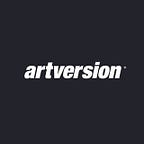Design + Development Bridge: Creating Interactive User Experiences
Now more than ever, integrating design and coding is fundamental to the overall creative process. In order to deliver high quality user experiences, it is absolutely critical to eliminate the separation between design and development.
Traditionally, UI/UX designers will kick off the process by establishing the user flows and pathways in tandem with the overall look and feel of the interface. Those designs are then implemented by the development team to create the final product. Though this seems like a fairly straightforward process, it is incredibly important for both teams to have a cohesive strategy that works together in order to make it work.
Streamlining the Design Process
With the prototyping tools available today, the creative process has never been easier to manage. Programs like Adobe XD and Figma allow designers to export their designs into code, making it easier for the developer to place it in the designated format and framework.
As time has shown us, newer and more progressive applications are constantly being developed. These apps streamline the design and coding processes, allowing designers to input their work directly into code and instantly push it into a live environment.
However, just because you can export directly into code doesn’t mean this new integrated process doesn’t come with a myriad of caveats. Although it may seem like a wonderful new evolution, some components may not translate correctly. Moreover, some designs may not even be achievable within this scope, especially within a responsive design environment.
These challenging circumstances are the reason why designers and developers work closely together from start to finish; so they can create something that maintains the integrity of the design as well as its functional capabilities throughout the development phase.
Integrating Design and Development
Between designers and developers, learning how their counterparts work is becoming more and more accessible with the rise of online learning and knowledge sharing. Tools like Udemy or LinkedIn Learning, as well as free videos on YouTube, are now at your disposal. These resources allow users to teach each other how to create more cohesive user experiences on the web.
Users now have unlimited access to basic coding in HTML5, learning frameworks like Bootstrap, and customizing CSS or Javascript. The same goes for learning design as well. Taking inspiration from other designers and learning their processes can allow developers to better handle and incorporate coding elements.
That said, we’re also witnessing the pain points of companies and agencies becoming broader in correlation with the skills and requirements needed to fulfill the protocol for future employees.
Having the ability to design or code something simply doesn’t seem to fill the void as it did ten years ago. Most designers and developers understand that they need a multidisciplinary skill set in both design and code in order to collaborate with multiple departments and create a working product.
While this can be an initial challenge for hopeful designers, it also allows for a more cohesive design environment. Being able to understand how each process works together can help designers avoid implementing certain elements and divert confusion.
Promoting User Engagement
To add to the complexity, well-designed user experiences rely on interface interactivity, microinteractions and user-initiated triggers. Those animation-driven interactions thoughtfully integrated into the design systems allow us to tell unique stories and increase user engagement. With instant gratification or gamification of the interface, we enable end-users to have immediate results from their actions, avoiding delay and uncertainty by promoting clarity and engagement.
Thanks to the technology available today, interaction design processes have evolved to facilitate multifaceted user engagement and retention. This is done by reducing the cognitive load to maximize usability. With available frameworks, designers and developers can invest their efforts in developing meaningful pathways fulfilled with interactivity for better user experiences.
